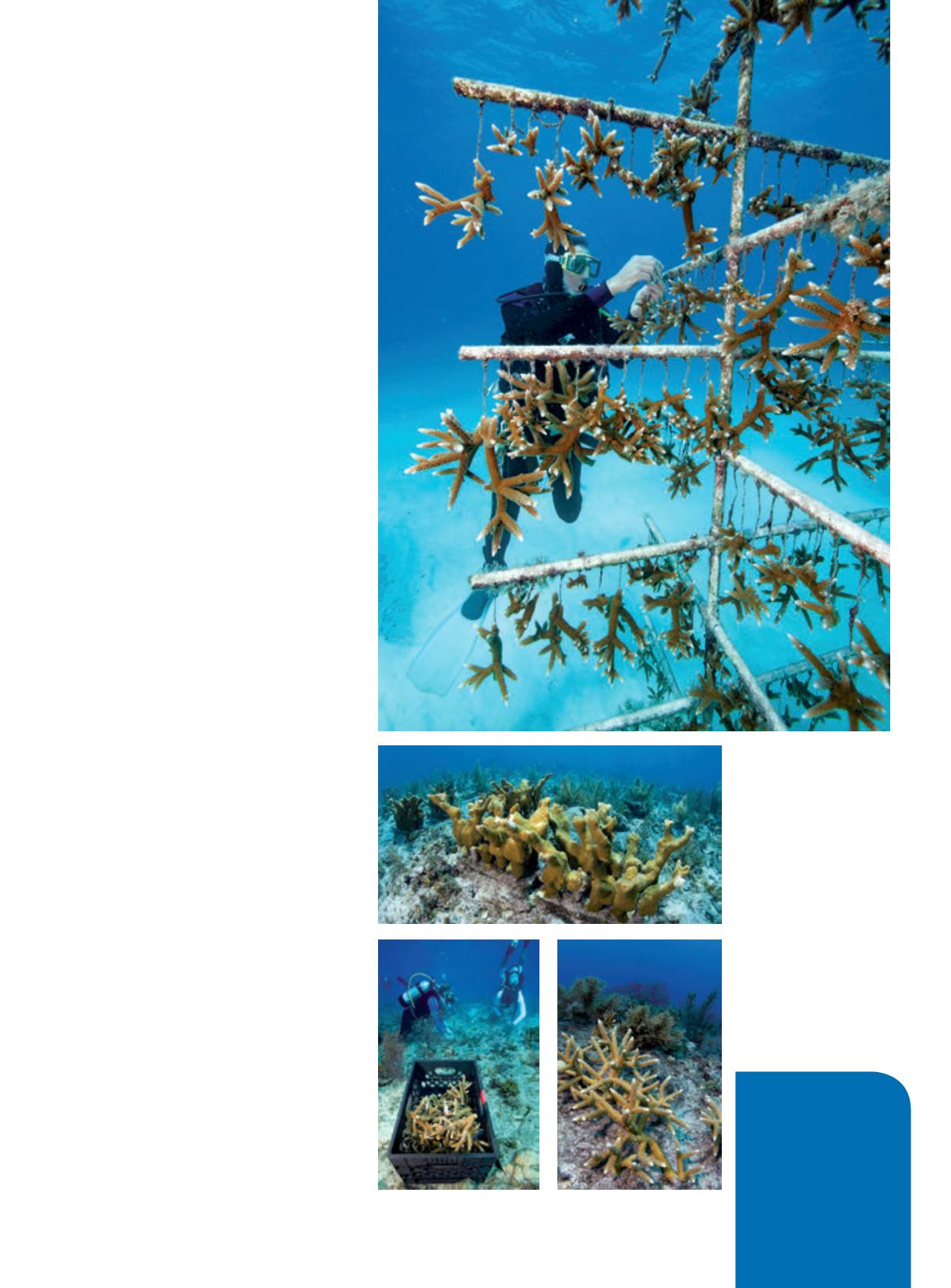

genetically identical to each other. To
grow more of a particular individual,
divers simply break off a small piece
from the “parent coral” and hang it
next to its siblings. Amazingly, some
of the earliest parent corals, collected
more than a decade ago as “fragments
of opportunity” broken off from the
reef by storms, are still going strong
today. “A lot of the parent fragments
have been in our nursery for 10 to 15
years now,” Ripple said. “From the
initial fragments collected, you can
create thousands and thousands of
corals. Instead of taking coral from
one reef and putting it on another, the
nursery can sustain your propagation
in perpetuity.”
SUPERCHARGING THE SCIENCE
Perhaps even more significant than the
sheer number of corals to be planted
under the latest CRF project is how
they plan to do it. “Basically, what we
did in the past was whatever corals we
had available, we would plant on the
reefs,” Ripple said. “Our goal was to
outplant as many different genotypes
as we could.” This time the approach
is different. Instead of a coral-planting
free-for-all, Ripple’s team carefully
selected a genetically diverse roster
of corals — 50 staghorn, 50 elkhorn
— based on high-resolution genome
sequencing done by Steve Vollmer,
Ph.D., at Northeastern University.
“From there, we’re planting those
genotypes across eight different reef
habitats in the same design, the same
way, in really large numbers,” she said.
By keeping meticulous records of
where each genetic strain of coral is
planted and monitoring how well they
do over time, researchers will be able
to look for links between a coral’s genes
and its ability to survive in a particular
environment. “Once we can understand
what’s actually causing them to react
differently, that has really broad
implications for further restoration
of coral reefs,” Ripple said. “So we’re
hoping that this can be an example for
other groups to follow.”
Clockwise from above:
Ken
Nedimyer tends to staghorn
coral growing on a coral tree
nursery offshore of the Florida
Keys. Elkhorn coral grows on
“blocks” in the CRF Snapper
Ledge Nursery to act as brood
stock for elkhorn propagation.
After three to six months,
corals grow over the epoxy
and adhere naturally to the
reef. As they continue to grow,
the corals begin to fuse into
one another, creating coral
thickets that act as habitat for
fish and invertebrates. Divers
transport crates of corals
to a restoration site, where
they will glue them to the
reef using a two-part marine
epoxy.
LEARN MORE
For more information
or to find out how you
can get involved, visit
coralrestoration.org.
ALERTDIVER.COM|
19


















